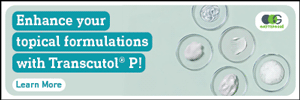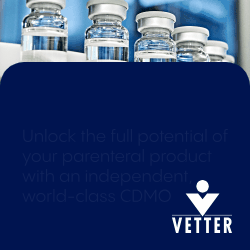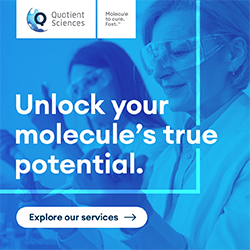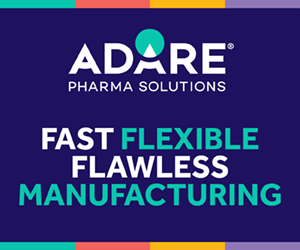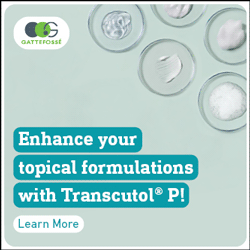Drug Delivery
FORMULATION FORUM - Self-Emulsifying Drug Delivery Systems for Improving Oral Bioavailability of Drugs
Jim Huang, PhD, and Shaukat Ali, PhD, say as more NCEs continue to be discovered with less options to find the appropriate excipients and solubilizers for Class II and IV drugs, the pharma industry has begun to evaluate liquid SEDDS for expediting drugs to market.
NASAL DRUG DELIVERY - Overcoming the Challenges of Formulation Development
Eric Kaneps explores the nasal drug delivery landscape, including the benefits of nasal administration compared with other routes and the unique formulation challenges associated with this delivery method.
DRUG DEVELOPMENT - The Next Frontier in Immunotherapy for Ovarian Cancer
Khursheed Anwer, PhD, MBA, and Douglas V. Faller, MD, PhD, highlight a new delivery system (TheraPlas®) being used to develop a more localized IL-12 immunotherapy for ovarian cancer and review its promising Phase 2 results.
EXECUTIVE INTERVIEW - Gelteq: A Breakthrough Ingestible Gel Drug & Nutrient Delivery System
Nathan Givoni, Co-Founder and CEO of Gelteq, discusses challenges with traditional drug delivery and the company’s innovative ingestible gel platform designed for drug and nutrient delivery.
Bespak Achieves Sustainability Milestone With First Life Cycle Assessment for Pressurized Metered Dose Inhaler Valve
Bespak, a specialist inhalation contract development and manufacturing organization (CDMO), recently announced it has completed its first life cycle assessment (LCA) for its market-leading BK357…
Silo Pharma’s SP-26 Ketamine Implant Meets All Endpoints in Fibromyalgia Study
Silo Pharma, Inc. recently announced positive results for its preclinical study evaluating SP-26, a novel extended-release ketamine implant which it believes supports SP-26’s potential as…
PCI Pharma Services to Acquire US-Based Aseptic Fill-Finish CDMO Ajinomoto Althea
PCI Pharma Services is acquiring an entire equity stake in Ajinomoto Althea, Inc., a US-based sterile fill-finish CDMO and 100% subsidiary of Japan-based Ajinomoto Co.,…
Tiziana Life Sciences Announces University of Massachusetts Commences Dosing Intranasal Foralumab in Phase 2 Multiple Sclerosis Trial
Tiziana Life Sciences, Ltd. recently announced dosing has commenced at the fourth clinical site in its ongoing Phase 2 trial evaluating intranasal foralumab in patients…
Kindeva Bolsters Executive Team With Chief Quality Officer
Kindeva recently announced the appointment of Melanie Cerullo as Chief Quality Officer to drive its quality, compliance and regulatory strategy. With a proven track record in…
Ligand Subsidiary Pelthos Therapeutics to Combine With Channel Therapeutics
Ligand Pharmaceuticals Incorporated and Channel Therapeutics Corporation recently announced the signing of a definitive merger agreement to combine Ligand’s wholly owned subsidiaries, Pelthos Therapeutics Inc.…
Q32 Bio Doses First Patients in Both Part A Open-Label Extension & Part B of SIGNAL-AA Phase 2a Trial Evaluating Bempikibart in Alopecia Areata
Q32 Bio Inc. recently announced it has dosed the first patients in both the Part A open-label extension (OLE) and Part B of the SIGNAL-AA…
Agno Pharma’s Particle Sciences, Inc. Achieves ISO 13485:2016 Certification
Agno Pharma recently announced its subsidiary, Particle Sciences, Inc., has earned ISO 13485:2016 certification from National Quality Assurance, U.S.A. (NQA). This achievement underscores Particle Sciences’…
SPECIAL FEATURE - Bioavailability & Solubility: The Promise of Novel Ingredients
Contributor Cindy H. Dubin, speaks with several innovating companies to discuss the use of novel excipients as well as other methods and technologies for tackling bioavailability and solubility once and for all.
FORMULATION FORUM - Lymphatic versus Portal Drug Delivery: An Understanding of Drug Oral Absorption & Food Effect
Jim Huang, PhD, and Shaukat Ali, PhD, say the lymphatic system is a distinctive route that is essential for drug transport and delivery of large and lipophilic molecules by alleviating the challenges in penetrating blood capillaries.
DRUG DEVELOPMENT - Improving Bioavailability & Solubility in OSDs
Hibreniguss Terefe, PhD, explores the options available to improve bioavailability and solubility and provides guidance to support decision-making when designing oral formulations for poorly soluble drug candidates in early development.
EXECUTIVE INTERVIEW - Lonza: Driving Innovation & Sustainability: CDMO Trends & the Future of ADCs
Sebastian Stenderup, Executive Director, Head of Commercial EMEA, Lonza, discusses some of the trends CDMOs are currently facing, from the growth of ADCs to the importance of sustainability, and how his company is responding to them.
ORAL DOSAGE FORMS - The Future of Oral Dosage: Innovations, Challenges & the Path Forward in 2025
Sébastien Croquet explores the latest industry challenges, cutting-edge manufacturing techniques, and patient needs defining today’s oral delivery methods, and breaks down some of the ways drug producers can ride, or even define, the next wave of oral drug delivery.
Tiziana Life Sciences Announces Johns Hopkins University Commences Dosing Nasal Foralumab in Phase 2 Multiple Sclerosis Clinical Trial
Tiziana Life Sciences, Ltd. recently announced dosing has commenced at Johns Hopkins University (JHU) Autoimmunity Center of Excellence, the third clinical site in its Phase 2…
Atsena Therapeutics Announces $150M to Further Advance Ocular Gene Therapy Programs
Atsena Therapeutics recently announced the successful close of an oversubscribed $150-million Series C financing. The financing was led by Bain Capital’s Life Sciences team, with…
DDL Launches New GMP Lab for Drug Delivery Testing
DDL, a leading provider of package, product, and material testing services, recently announce the opening of a new Good Manufacturing Practice (GMP) laboratory dedicated to…
What are Drug Delivery Systems?
Drug delivery systems are engineered technologies for the targeted delivery and/or controlled release of therapeutic agents. The practice of drug delivery has changed significantly in the past few decades and even greater changes are anticipated in the near future. Drug delivery includes but is not limited to oral delivery, gene/cell delivery, topical/transdermal delivery, inhalation deliver, parenteral delivery, respiratory delivery, capsules, particle design technology, buccal delivery, etc.
The Evolution of Drug Delivery Systems
Drug delivery systems have greatly evolved over the past 6 decades. In the past 12 years specifically, there have been huge advancements in drug delivery technology. For instance, advanced medication delivery systems, such as transdermal patches, are able to deliver a drug more selectively to a specific site, which frequently leads to easier, more accurate, and less dosing overall. Devices such as these can also lead to a drug absorption that is more consistent with the site and mechanism of action. There are other drug delivery systems used in both medical and homecare settings that were developed because of various patient needs and researchers continue to develop new methods.
Drug Delivery System Market Size
The pharmaceutical drug delivery market size is studied on the basis of route of administration, application, and region to provide a detailed assessment of the market. On the basis of route of administration, it is segmented into oral delivery, pulmonary delivery, injectable delivery, nasal delivery, ocular delivery, topical delivery, and others.
The estimated global market size of drug delivery products was $1.4 trillion in 2020. Unfortunately, 40% of marketed drugs and 90% of pipeline drugs (mostly small molecules) are poorly soluble in water, which makes parenteral, topical, and oral delivery difficult or impossible. In relation, poor solubility often leads to low drug efficacy. Add in the fact that many other hurdles exist in the form of drug loading, stability, controlled release, toxicity, and absorption – it’s not hard to understand the difficulties in bringing new drug products to market. Additionally, biopharmaceuticals (proteins, peptides, nucleic acids, etc) and combination drug products possess many of these same problematic obstacles that affect efficacy. These challenges, coupled with the complexity and diversity of new pharmaceuticals, have fueled the development of a novel drug delivery platforms that overcome a great many bioavailability and delivery obstacles. By leveraging these platforms, pharmaceutical and biopharmaceutical companies can improve dosing accuracy, efficacy, and reproducibility in their drug discovery and drug delivery research.
Drug Delivery System Demand
The demand for pharmaceutical products worldwide is only going to increase in the coming years, as old and emerging diseases continue to threaten the well-being of people globally. Drug discovery efforts are expected to intensify, generating a large variety of active compounds with vastly different structures and properties. However, it is well known that despite tremendous output of the drug discovery process, the success rate of a candidate compound becoming an approved drug product is extremely low. The majority of candidate compounds are discarded due to various hurdles in formulation and preclinical testing (such as issues with solubility, stability, manufacturing, storage, and bioavailability) before even entering into clinical studies. Therefore, advances in formulation and drug delivery, especially the development of new and versatile biomaterial platforms as effective excipients, may salvage many “difficult,” otherwise triaged, drug compounds, and significantly enhance their chance of becoming viable products. Furthermore, breakthroughs in biomaterial platform technologies will also facilitate life cycle management of existing APIs through reformulation, repurposing of existing APIs for new indications, and development of combination products consisting of multiple APIs.





